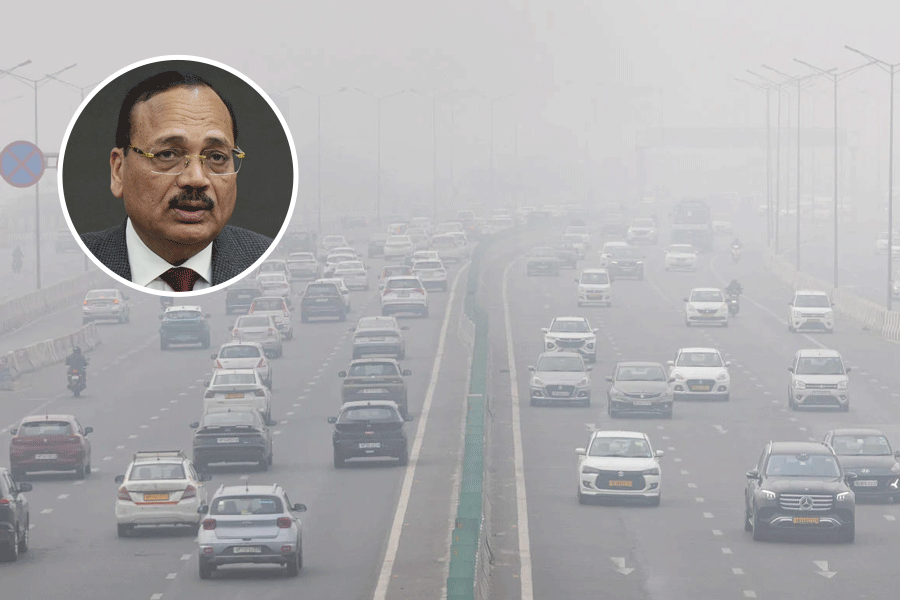Around the same time that climate protests were becoming synonymous with food, art, glue and public roads, the group best known for civil disobedience announced a surprising change of tactic. Though not of heart. For the past months and weeks, Extinction Rebellion has been preparing for a massive climate protest dubbed "the Big One” outside parliament in London.
Meanwhile, other groups such as Germany's Letzte Generation or the UK's Just Stop Oil are following in XR's original footsteps, and see louder, more disruptive action such as throwing tomato soup on Van Gogh's ‘Sunflowers' as the way forward.
"When Phoebe and I threw that soup, it got more people talking about the climate crisis than when 3 million people were displaced by floods in Pakistan,” Anna Holland, a 21-year-old activist with the UK-based group Just Stop Oil told DW. "And that's solid evidence that disruptive action is incredibly effective.”
But is does it have more or less impact than conventional forms of demonstration? In order to find out, DW analyzed 4.6 million tweets published by 30 large English-language news organizations between August 20, 2018 — when Greta Thunberg began her climate school strikes — and February 20, 2023.
Media cycles matter
DW identified 2,483 news tweets that mentioned protests about climate and environment, and compared their engagement levels — likes, replies, quotes, and retweets — with other tweets published by the same news organization in the same week.
The analysis clearly shows the media cycles of climate coverage. The volume of tweets about climate protests increases during official forums, summits, and global events such as UN climate conferences or the World Economic Forum.
For example, the week of the September 2019 UN Climate Summit saw the highest volume of news tweets about climate activism. There were 167 in total, many referencing Thunberg's "how dare you!” speech, in which she emotionally redressed world leaders for the "fairy tale of eternal economic growth.”
Nearly half the tweets relating to the event were among the most popular published by their respective news organizations in that week.
Similar patterns emerged around events such as the World Economic Forum and UN climate conferences, which are typically times when climate activism most easily captures media attention.
"Timing seems to be much more important than we thought,” said James Ozden of the Social Change Lab, a London-based organization that studies social movements to find ways to accelerate positive social change. "When the media cycles are around your issue, it's much easier to get attention for your message."
People are interested in climate protest stories
Although climate protests only account for a small share of all tweets published by news organizations, they generate disproportionate levels of engagement. They often rank among the best performing tweets of the week.
32% of tweets about climate activism were among the top 10% performers on their respective channels.
Disruptive protests do not necessarily generate the most attention
Climate protests fall into two categories: disruptive and non-disruptive.
The former, which incorporate actions like defacing works of art, storming public buildings and blocking traffic, accounted for 33% of the total number of climate protest tweets. Non-disruptive actions, by comparison, include activist participation at official events, public speeches and legal rallies. Tweets about these events accounted for 67% of the total.
When comparing the average engagement rates for each category, tweets about non-disruptive protests are twice as likely to be among the top performing tweets of any channel in any given week. This shows that disruptive climate protests are not more effective at sparking discussion in the Twittersphere than non-disruptive ones.
"Non-disruptive protests work when the media cycle is already a bit focused on climate change. Disruptive protests like the soup (throwing) work when the media cycle is about something else, and they put it on climate change," said Ozden.
Negativity surrounding protests on Twitter: Business as usual
Many activists involved in disruptive protests were criticized on social media for harming their own image. Though they don't necessarily see it that way.
"What's important to me is that the government stops new oil and gas licensing in the UK. The only thing I care about is having a future where I can raise children and not feel guilty about bringing them into a future that is filled with death and famine and war,” Anna Holland of Just Stop Oil explained.
To understand how people react to tweets about climate protests, DW selected those with the highest levels of engagement in the categories of disruptive protests, non-disruptive protests as well as a random sample of tweets on different topics for the purpose of comparison. All replies to these tweets were then classified as "negative” or "positive”.
The results show that while many people react negatively to climate protest tweets, this is also true for those about other topics.
Additionally, disruptive tweets get slightly more negative responses, but the margin is small. Overall, replies to climate protest tweets are not as negative as responses to those about some other topics.
Do radical flanks help or hinder?
Although disruptive protests don't gain more traction in the Twittersphere, less conventional groups can impact overall climate activism through what scientists call the radical flank theory.
"The theory says that if there is a more extreme protest movement, then that can have a positive or negative effect on more moderate groups within the same movement,” said Brent Simpson, a social psychologist at the University of South Carolina.
His latest research, published by Oxford University Press indicates that when one group of activists use extreme tactics, it makes those taking a more moderate approach seem more appealing. As a result, public support for the moderate group increases.
James Ozden's Social Change Lab conducted similar research in the UK and found that after Just Stop Oil's four-day motorway protest in London, support for and identification with the moderate environmental group Friends of the Earth increased.
Some academics point out the risk of increasing repression by the government towards all activists as a result of the radical flanks' actions. "I think we've seen this in the UK with the new legislation that brings longer prison sentences and fines for bailing non-violent crime activists,” Ozden said.
Nevertheless, Indigo Rumbelow, an activist with Just Stop Oil sees the need and a continued place for both approaches to raising awareness of the need for climate action. "Disruptive and non-disruptive protests are not in opposition to each other,” she said. "There is actually a synergy between them and they lift each other up.”
That theory is being put to the test. While climate activist groups like Just Stop Oil or Germany's Letzte Generation continue to disrupt, Extinction Rebellion is hoping its Big One protest in London will live up to its name and attract 100,000 people to take part in a more peaceful form of critical demonstration.










